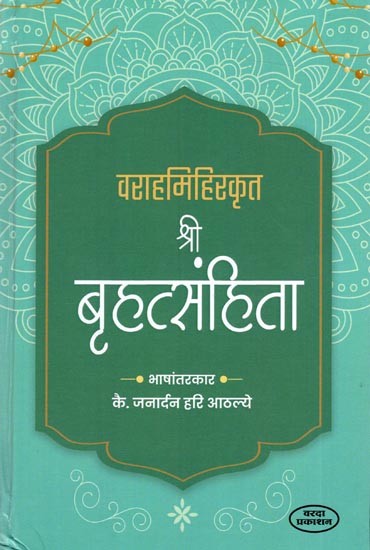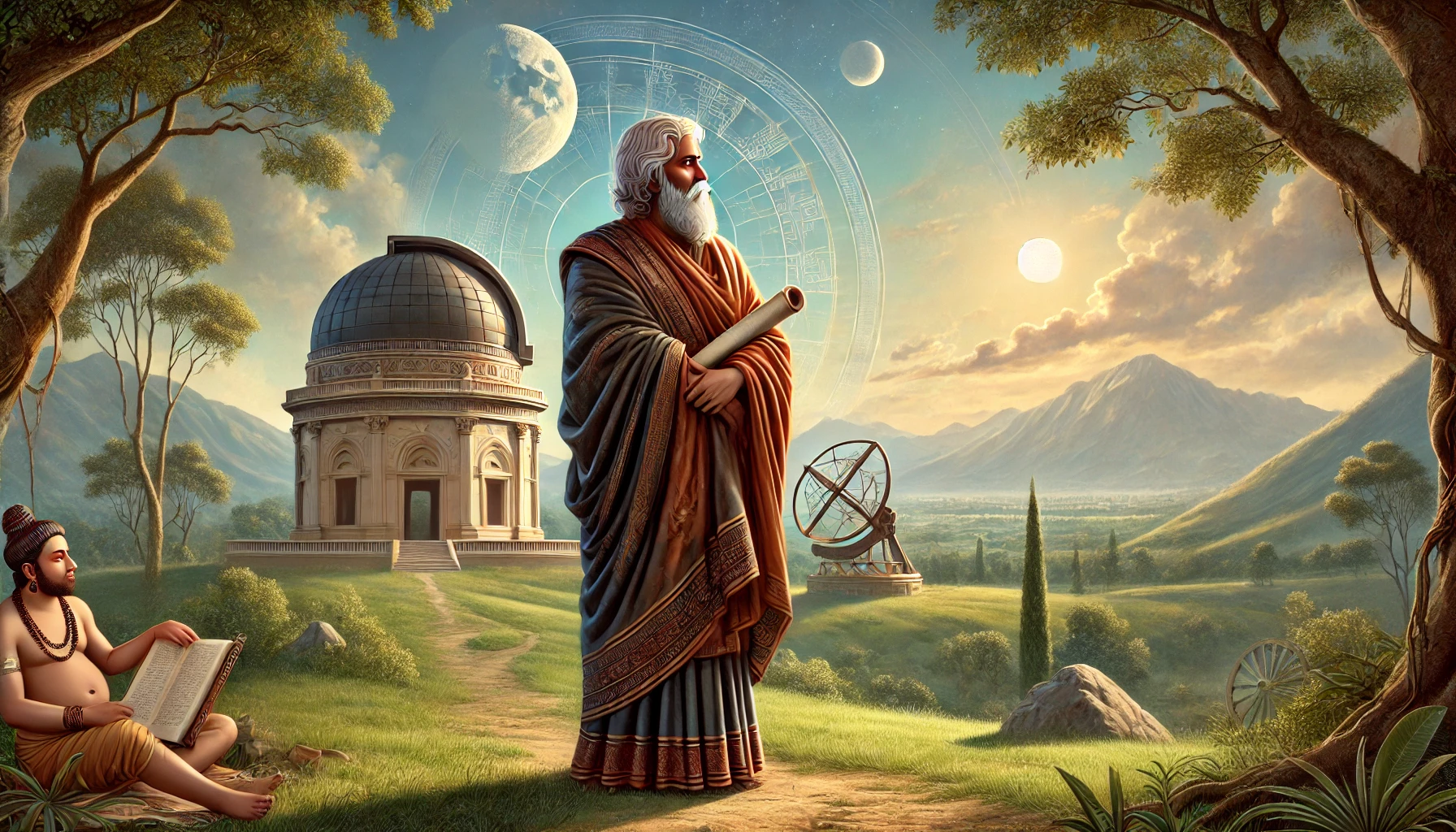Have you ever wondered how ancient scholars combined science and spirituality to understand the universe? Meet Varahamihira, a remarkable thinker from Ujjain who lived in the 6th century CE. He was well-versed in astrology, astronomy, and a ton of other areas, making him a standout in ancient Indian science.
Born in the Avanti region, he became a celebrated member of King Vikramaditya’s court, recognized as one of the “Nine Jewels” (Navaratnas) of his time.
Varahamihira is best known for his work, the Brihat Samhita, which is a huge encyclopedia that explores a variety of topics, including the movements of planets, eclipses, architecture, and farming practices.
This impressive text demonstrates his extensive knowledge of celestial phenomena and his skill in merging insights from different fields. He also contributed significantly with the Pancha-Siddhantika, which brings together five earlier astronomical texts, blending Indian and Greek ideas.
The creative concepts Varahamihira introduced in trigonometry and astrology paved the way for future thinkers. His impact is still alive in today’s astronomy and astrology, showing how ancient insights connect with current scientific understanding.
Know More About the Legacy of Varahamihira: Astrology Meets Astronomy Through This Blog
Come along as we explore the fascinating life and impact of this remarkable thinker who changed how we see the universe.
Who Was Varahamihira? A Brief Introduction
Varahamihira, who was born around 505 CE in Ujjain, India, was a remarkable polymath known for his significant contributions to astrology, astronomy, and mathematics. He was one of the “Nine Jewels” (Navaratnas) in King Vikramaditya’s court, where he became well-known for his extensive knowledge and creative ideas.
He received his education in the bustling intellectual hub of Ujjain, a place filled with scholars and astronomers. One of his most famous pieces is the Brihat Samhita, which is like a massive encyclopedia that dives into all sorts of topics, from how planets move to architecture, farming, and astrology.
It really shows how he thought everything in the universe is linked to what happens on Earth. He also made a big impact with the Pancha-Siddhantika, a work that pulls together five older astronomy texts and blends Indian and Greek ideas about the stars.
Varahamihira was a total game-changer in trigonometry, especially with his upgrades to the sine tables that Aryabhata created. He also came up with the cool idea that planets shine by reflecting sunlight instead of producing their own light, which was a pretty radical thought for his time.
His influence is still felt in modern astrology and astronomy, making him a respected name in the scientific community. The life and achievements of Varahamihira really showcase the amazing contributions of ancient Indian scholars to our grasp of the universe.
Read About Aryabhatta – https://itihaaskikhoj.in/aryabhatta-the-astronomer-and-mathematician/
The Significance of Ujjain: A Hub of Knowledge
Ujjain is a historically significant city that was a lively educational center in ancient India, especially during the 6th century when Varahamihira was prominent. Known for its rich cultural and intellectual legacy, Ujjain was one of the seven sacred cities in Hinduism, drawing in scholars from various areas like astronomy, mathematics, and astrology.
This dynamic hub created a nurturing space for knowledge to grow, helping Varahamihira to formulate his groundbreaking theories. As a court member under King Vikramaditya, Varahamihira was included in the elite “Nine Jewels” (Navaratnas).
This distinguished group featured some of the most brilliant minds of the time, promoting collaboration and the exchange of ideas. Surrounded by other esteemed scholars, Varahamihira was motivated to enhance his grasp of celestial events and human matters.
In Ujjain, there were observatories and libraries that allowed for careful astronomical research. Scholars could dive into the study of planets and celestial events, which significantly impacted Varahamihira’s work. His writings, including the Brihat Samhita and Panchasiddhantika, highlight the rich knowledge he absorbed in this bustling intellectual atmosphere.
Ujjain’s role as a pilgrimage destination has pulled in visitors from all over India and beyond, which really helped build its reputation as a hub for astrology. This blend of faith and learning allowed Varahamihira’s ideas to echo through time, cementing Ujjain’s place as a major center of knowledge in ancient India.
Read – https://itihaaskikhoj.in/srinivasa-ramanujan-the-self-taught-mathematician/
Key Works: The Brihat Samhita and Panchasiddhantika
Varahamihira, a prominent ancient Indian polymath, is best known for his two significant works: the Brihat Samhita and the Panchasiddhantika. These texts showcase his profound understanding of astrology, astronomy, and various other sciences.
The Brihat Samhita is this incredible encyclopedic work that has 106 chapters covering a bunch of different subjects. It goes into astrology, the movements of planets, eclipses, rainfall, architecture, gemology, and even things like marriage and home rituals. Varahamihira, the author, believed that celestial events are tied to what happens on Earth.

He explored how the positions of planets can influence our lives and the natural world, providing insights that astrologers have used for a long time. It also includes practical tips for agriculture and weather predictions, making it a key resource for ancient Indian society.
So, the Panchasiddhantika acts as a summary of five earlier astronomical works by various authors, like the Surya Siddhanta and Romaka Siddhanta. Created around 575 CE, it combines Indian and Hellenistic astronomy, discussing topics like the shifting of the equinoxes (ayanamsa) and giving us a look into mathematical astronomy.

These writings not only highlight Varahamihira’s smarts but also make him a major figure in science history, blending astrology with hands-on observation to enhance our understanding of the cosmos.
Astrology and Astronomy: The Interconnection in Varahamihira’s Work
Varahamihira skillfully blended astrology with astronomy, showcasing a deep grasp of how the movements of celestial bodies impact life on Earth. He was convinced that the alignment of stars and planets could shed light on human experiences, which is a key idea in astrology.
In his major work, the Brihat Samhita, he tackled various themes, such as the movements of planets, eclipses, and their astrological significance. He took great care to note how celestial events could impact weather, agricultural practices, and personal destinies.
His method was all about looking at real-life observations, encouraging astrologers to focus on the actual movements of the stars and planets instead of just following traditional beliefs. He even came up with the idea that planets and the moon don’t shine on their own but reflect sunlight, which was a game-changer that linked scientific exploration with astrology.
In his Pancha-Siddhantika, Varahamihira did an awesome job of summarizing past astronomical texts while weaving in astrological concepts. This work highlights his talent for merging insights from various traditions, including both Greek and Indian astronomy.
By showcasing how these disciplines connect, he paved the way for future scholars to investigate the universe through both scientific and astrological perspectives, keeping his impact alive in both areas today.
Mathematical Innovations: Contributions to Trigonometry and Beyond
Varahamihira really advanced the field of mathematics, especially trigonometry, back in the 6th century CE. He’s well-known for refining the sine tables that Aryabhata had put together, making them way more reliable for astronomy.
He also came up with fresh techniques for figuring out trigonometric functions like sine (jya), cosine (kojya), and cotangent, which were super important for tracking the positions of planets.
Additionally, he’s recognized for finding a version of what we now know as Pascal’s triangle, which he utilized to compute binomial coefficients. This groundbreaking method paved the way for later progress in combinatorics. He also created the first 4×4 magic square, highlighting his talent for tackling mathematical challenges.

Varahamihira’s influence went way beyond trigonometry; he explored different areas like astronomy and astrology, highlighting how these subjects are all connected. His writings demonstrate a strong understanding of math that has impacted both Indian and global math scenes. With his unique approaches and insights, Varahamihira has left a lasting mark that still inspires mathematicians today.
Read about great woman philosophers – https://itihaaskikhoj.in/gargi-vachaknavi-indias-first-woman-philosopher/
Influence on Future Generations: Varahamihira’s Enduring Impact
The influence of Varahamihira stretches far beyond his lifetime; he’s shaped the thoughts of many scholars across various cultures and centuries. His works found their way into Arabic translations during the Islamic Golden Age, allowing his ideas to reach a larger audience and fueling progress in both astronomy and astrology.
 Scholars such as Al-Biruni held him in high regard for his contributions, ensuring that his insights continued to be relevant throughout history. Nowadays, many contemporary astronomers and astrologers still turn to his writings as key texts that link ancient wisdom with modern science.
Scholars such as Al-Biruni held him in high regard for his contributions, ensuring that his insights continued to be relevant throughout history. Nowadays, many contemporary astronomers and astrologers still turn to his writings as key texts that link ancient wisdom with modern science.
Conclusion
Varahamihira is a major player in the history of science, showcasing the fascinating connection between astrology and astronomy in ancient India. His innovative writings set the stage for future discoveries in both areas, emphasizing the value of observation and real-world evidence. As we explore his contributions now, it’s clear that ancient knowledge can still enhance our modern perspectives—his lasting impact fuels our fascination with the cosmos and our place in it.


